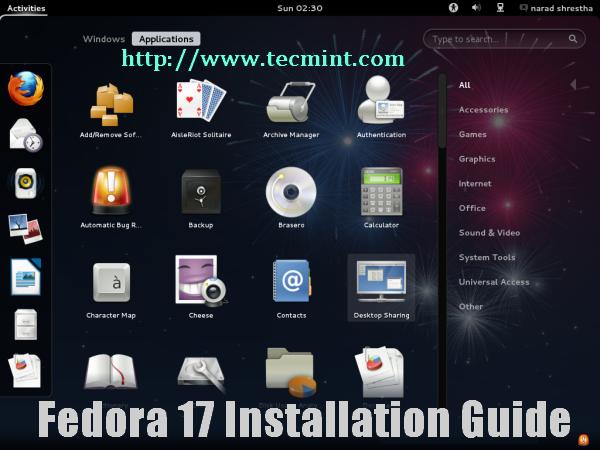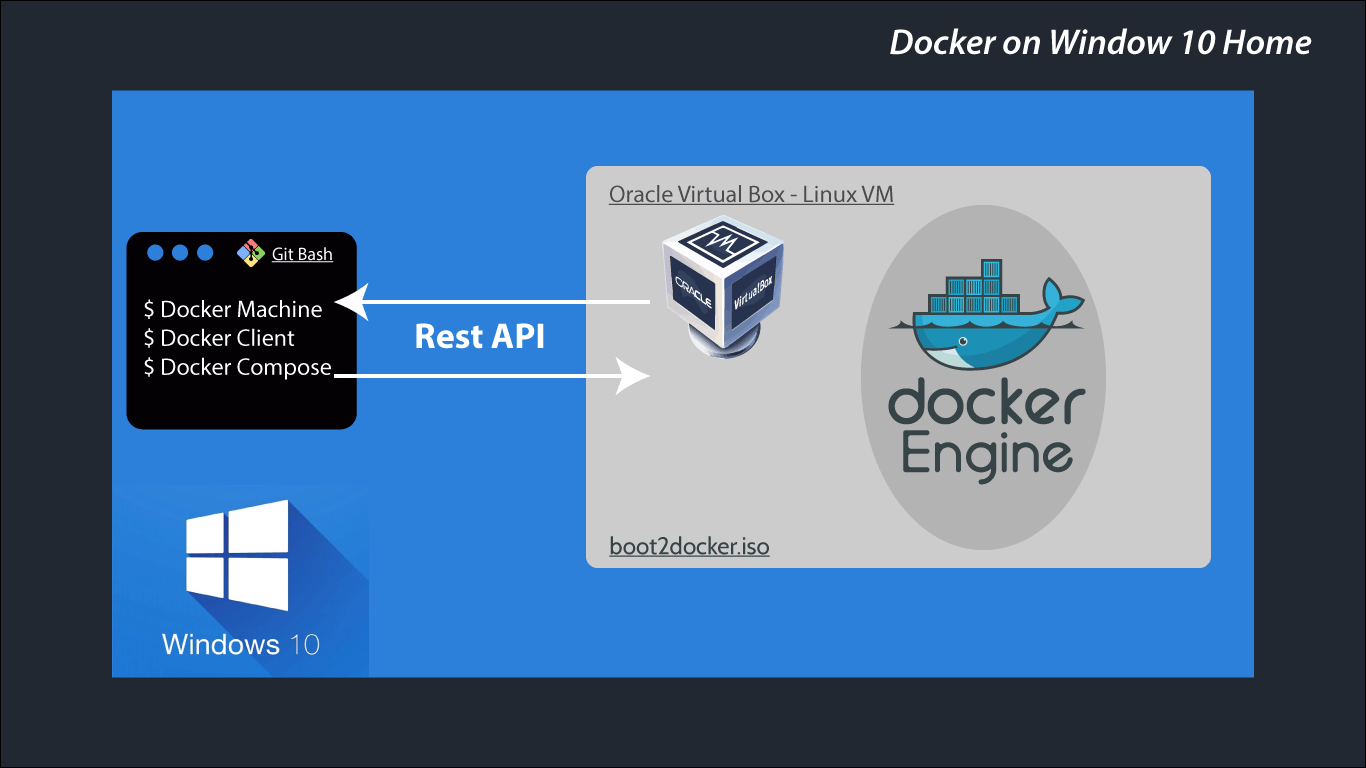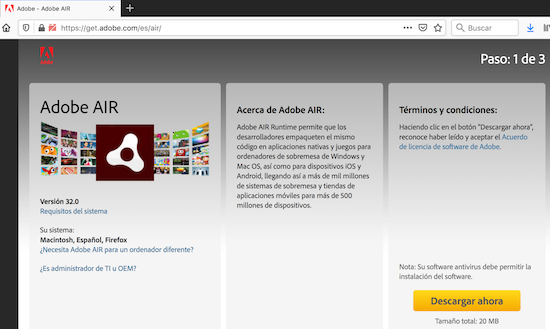Step 4 − If you scroll down on the same page, you can see the Docker pull command. This will be used to download the Jenkins Image onto the local Ubuntu server. Step 5 − Now go to the Ubuntu server and run the command − sudo docker pull jenkins Step 6 − To understand what ports are exposed by the container, you should use the Docker.
If you do not have Docker installed, choose your preferred operating system below to download Docker: Download Docker Desktop for Mac. Download Docker Desktop for Windows. Install Docker Engine on Linux. For Docker Desktop installation instructions, see Install Docker Desktop on Mac and Install Docker Desktop on Windows. Start the tutorial. This step-by-step guide will help you get started developing with remote containers by setting up Docker Desktop for Windows with WSL 2 (Windows Subsystem for Linux, version 2). Docker Desktop for Windows is available for free and provides a development environment for building, shipping, and running dockerized apps.
Estimated reading time: 4 minutes
Welcome! We are excited that you want to learn Docker.
This page contains step-by-step instructions on how to get started with Docker. In this tutorial, you’ll learn how to:
- Build and run an image as a container
- Share images using Docker Hub
- Deploy Docker applications using multiple containers with a database
- Running applications using Docker Compose
In addition, you’ll also learn about the best practices for building images, including instructions on how to scan your images for security vulnerabilities.
If you are looking for information on how to containerize an application using your favorite language, see Language-specific getting started guides.
We also recommend the video walkthrough from DockerCon 2020.
Download and install Docker
This tutorial assumes you have a current version of Docker installed on yourmachine. If you do not have Docker installed, choose your preferred operating system below to download Docker:
For Docker Desktop installation instructions, see Install Docker Desktop on Mac and Install Docker Desktop on Windows.
Start the tutorial
If you’ve already run the command to get started with the tutorial, congratulations! If not, open a command prompt or bash window, and run the command:
You’ll notice a few flags being used. Here’s some more info on them:
-d- run the container in detached mode (in the background)-p 80:80- map port 80 of the host to port 80 in the containerdocker/getting-started- the image to use
Tip
You can combine single character flags to shorten the full command.As an example, the command above could be written as:
The Docker Dashboard
Before going too far, we want to highlight the Docker Dashboard, which givesyou a quick view of the containers running on your machine. The Docker Dashboard is available for Mac and Windows. It gives you quick access to container logs, lets you get a shell inside the container, and lets youeasily manage container lifecycle (stop, remove, etc.).
To access the dashboard, follow the instructions for either Mac or Windows. If you open the dashboardnow, you will see this tutorial running! The container name (jolly_bouman below) is arandomly created name. So, you’ll most likely have a different name.
What is a container?
Now that you’ve run a container, what is a container? Simply put, a container issimply another process on your machine that has been isolated from all other processeson the host machine. That isolation leverages kernel namespaces and cgroups, features that have been in Linux for a long time. Docker has worked to make these capabilities approachable and easy to use.
Creating containers from scratch
If you’d like to see how containers are built from scratch, Liz Rice from Aqua Securityhas a fantastic talk in which she creates a container from scratch in Go. While she makesa simple container, this talk doesn’t go into networking, using images for the filesystem, and more. But, it gives a fantastic deep dive into how things are working.
What is a container image?

When running a container, it uses an isolated filesystem. This custom filesystem is provided by a container image. Since the image contains the container’s filesystem, it must contain everything needed to run an application - all dependencies, configuration, scripts, binaries, etc. The image also contains other configuration for the container, such as environment variables,a default command to run, and other metadata.
We’ll dive deeper into images later on, covering topics such as layering, best practices, and more.
Info
If you’re familiar with chroot, think of a container as an extended version of chroot. Thefilesystem is simply coming from the image. But, a container adds additional isolation notavailable when simply using chroot.
CLI references
Refer to the following topics for further documentation on all CLI commands used in this article:
get started, setup, orientation, quickstart, intro, concepts, containers, docker desktop7.6.1 Basic Steps for MySQL Server Deployment with Docker
The MySQL Docker images maintained by the MySQL team are built specifically for Linux platforms. Other platforms are not supported, and users using these MySQL Docker images on them are doing so at their own risk. See the discussion here for some known limitations for running these containers on non-Linux operating systems.
Downloading a MySQL Server Docker Image
For users of MySQL Enterprise Edition: A subscription is required to use the Docker images for MySQL Enterprise Edition. Subscriptions work by a Bring Your Own License model; see How to Buy MySQL Products and Services for details.
Downloading the server image in a separate step is not strictly necessary; however, performing this step before you create your Docker container ensures your local image is up to date. To download the MySQL Community Edition image, run this command:
The tag is the label for the image version you want to pull (for example, 5.6, 5.7, 8.0, or latest). If : is omitted, the taglatest label is used, and the image for the latest GA version of MySQL Community Server is downloaded. Refer to the list of tags for available versions on the mysql/mysql-server page in the Docker Hub.
To download the MySQL Community Edition image from the Oracle Container Registry (OCR), run this command:
To download the MySQL Enterprise Edition image from the OCR, you need to first accept the license agreement on the OCR and log in to the container repository with your Docker client:
Visit the OCR at https://container-registry.oracle.com/ and choose MySQL.
Under the list of MySQL repositories, choose
enterprise-server.If you have not signed in to the OCR yet, click the button on the right of the page, and then enter your Oracle account credentials when prompted to.
Follow the instructions on the right of the page to accept the license agreement.
Log in to the OCR with your Docker client (the
dockercommand) using thedocker logincommand:

Download the Docker image for MySQL Enterprise Edition from the OCR with this command:
There are different choices for tag
8.0,8.0.(xxis the latest version number in the 8.0 series),latest: MySQL 8.0, the latest GA5.7,5.7.(yyis the latest version number in the 5.7 series): MySQL 5.7
To download the MySQL Enterprise Edition image from My Oracle Support website, go onto the website, sign in to your Oracle account, and perform these steps once you are on the landing page:
Select the Patches and Updates tab.
Go to the Patch Search region and, on the Search tab, switch to the Product or Family (Advanced) subtab.
Enter “MySQL Server” for the Product field, and the desired version number in the Release field.
Use the dropdowns for additional filters to select Description—contains, and enter “Docker” in the text field.
The following figure shows the search settings for the MySQL Enterprise Edition image for MySQL Server 8.0:
Click the button and, from the result list, select the version you want, and click the button.
In the File Download dialogue box that appears, click and download the
.zipfile for the Docker image.
Unzip the downloaded .zip archive to obtain the tarball inside (mysql-enterprise-server-), and then load the image by running this command: version.tar
You can list downloaded Docker images with this command:
Starting a MySQL Server Instance
To start a new Docker container for a MySQL Server, use the following command:
The image name can be obtained using the docker images command, as explained in Downloading a MySQL Server Docker Image.
The --name option, for supplying a custom name for your server container, is optional; if no container name is supplied, a random one is generated.
The --restart option is for configuring the restart policy for your container; it should be set to the value on-failure, to enable support for server restart within a client session (which happens, for example, when the RESTART statement is executed by a client or during the configuration of an InnoDB cluster instance). With the support for restart enabled, issuing a restart within a client session causes the server and the container to stop and then restart. Support for server restart is available for MySQL 8.0.21 and later.
For example, to start a new Docker container for the MySQL Community Server, use this command:
To start a new Docker container for the MySQL Enterprise Server with a Docker image downloaded from the OCR, use this command:
To start a new Docker container for the MySQL Enterprise Server with a Docker image downloaded from My Oracle Support, use this command:
If the Docker image of the specified name and tag has not been downloaded by an earlier docker pull or docker run command, the image is now downloaded. Initialization for the container begins, and the container appears in the list of running containers when you run the docker ps command. For example:
The container initialization might take some time. When the server is ready for use, the STATUS of the container in the output of the docker ps command changes from (health: starting) to (healthy).
The -d option used in the docker run command above makes the container run in the background. Use this command to monitor the output from the container:
I just finally managed to install Docker on my Synology DS416play I couldn’t achieve installation using the Package Center inside DSM, keeping getting “Operation failed” errors just after the upload finishes. So what I’ve done is manually install the SPK. To do that, connect to your NAS using a SSH client and then do the following command. The docker build has a -ssh option to allow the Docker Engine to forward SSH agent connections. For more information on SSH agent, see the OpenSSH man page. Only the commands in the Dockerfile that have explicitly requested the SSH access by defining type=ssh mount have access to SSH agent connections. Docker install ssh client ubuntu. Finally, install Docker: sudo apt install docker-ce Docker should now be installed, the daemon started, and the process enabled to start on boot. Check that it’s running: sudo systemctl status docker The output should be similar to the following, showing that the service is active and running. Docker takes away repetitive, mundane configuration tasks and is used throughout the development lifecycle for fast, easy and portable application development - desktop and cloud. Docker’s comprehensive end to end platform includes UIs, CLIs, APIs and security that are engineered to work together across the entire application delivery lifecycle. Step 1: Update System. Ensure your system is updated. Sudo apt -y update Step 2: Install basic dependencies. There are few dependencies we need to configure Docker repositories and do the actual package installation.

Once initialization is finished, the command's output is going to contain the random password generated for the root user; check the password with, for example, this command:
Connecting to MySQL Server from within the Container
Once the server is ready, you can run the mysql client within the MySQL Server container you just started, and connect it to the MySQL Server. Use the docker exec -it command to start a mysql client inside the Docker container you have started, like the following:
When asked, enter the generated root password (see the last step in Starting a MySQL Server Instance above on how to find the password). Because the MYSQL_ONETIME_PASSWORD option is true by default, after you have connected a mysql client to the server, you must reset the server root password by issuing this statement:
Substitute password with the password of your choice. Once the password is reset, the server is ready for use.
Container Shell Access
To have shell access to your MySQL Server container, use the docker exec -it command to start a bash shell inside the container:
You can then run Linux commands inside the container. For example, to view contents in the server's data directory inside the container, use this command:
Stopping and Deleting a MySQL Container
To stop the MySQL Server container we have created, use this command:
docker stop sends a SIGTERM signal to the mysqld process, so that the server is shut down gracefully.
Docker Installation On Linux Step By Step File
Also notice that when the main process of a container (mysqld in the case of a MySQL Server container) is stopped, the Docker container stops automatically.
To start the MySQL Server container again:

To stop and start again the MySQL Server container with a single command:
To delete the MySQL container, stop it first, and then use the docker rm command:
If you want the Docker volume for the server's data directory to be deleted at the same time, add the -v option to the docker rm command.
Upgrading a MySQL Server Container
Before performing any upgrade to MySQL, follow carefully the instructions in Chapter 10, Upgrading MySQL. Among other instructions discussed there, it is especially important to back up your database before the upgrade.
The instructions in this section require that the server's data and configuration have been persisted on the host. See Persisting Data and Configuration Changes for details.
Follow these steps to upgrade a Docker installation of MySQL 5.7 to 8.0:
Stop the MySQL 5.7 server (container name is
mysql57in this example):Download the MySQL 8.0 Server Docker image. See instructions in Downloading a MySQL Server Docker Image; make sure you use the right tag for MySQL 8.0.
Start a new MySQL 8.0 Docker container (named
mysql80in this example) with the old server data and configuration (with proper modifications if needed—see Chapter 10, Upgrading MySQL) that have been persisted on the host (by bind-mounting in this example). For the MySQL Community Server, run this command:If needed, adjust
mysql/mysql-serverto the correct image name—for example, replace it withcontainer-registry.oracle.com/mysql/enterprise-serverfor MySQL Enterprise Edition images downloaded from the OCR, ormysql/enterprise-serverfor MySQL Enterprise Edition images downloaded from My Oracle Support.Wait for the server to finish startup. You can check the status of the server using the docker ps command (see Starting a MySQL Server Instance for how to do that).
For MySQL 8.0.15 and earlier: Run the mysql_upgrade utility in the MySQL 8.0 Server container (not required for MySQL 8.0.16 and later):
When prompted, enter the root password for your old MySQL 5.7 Server.
Finish the upgrade by restarting the MySQL 8.0 Server container:
More Topics on Deploying MySQL Server with Docker
Docker Installation On Linux Step By Step Steps
For more topics on deploying MySQL Server with Docker like server configuration, persisting data and configuration, server error log, and container environment variables, see Section 7.6.2, “More Topics on Deploying MySQL Server with Docker”.

